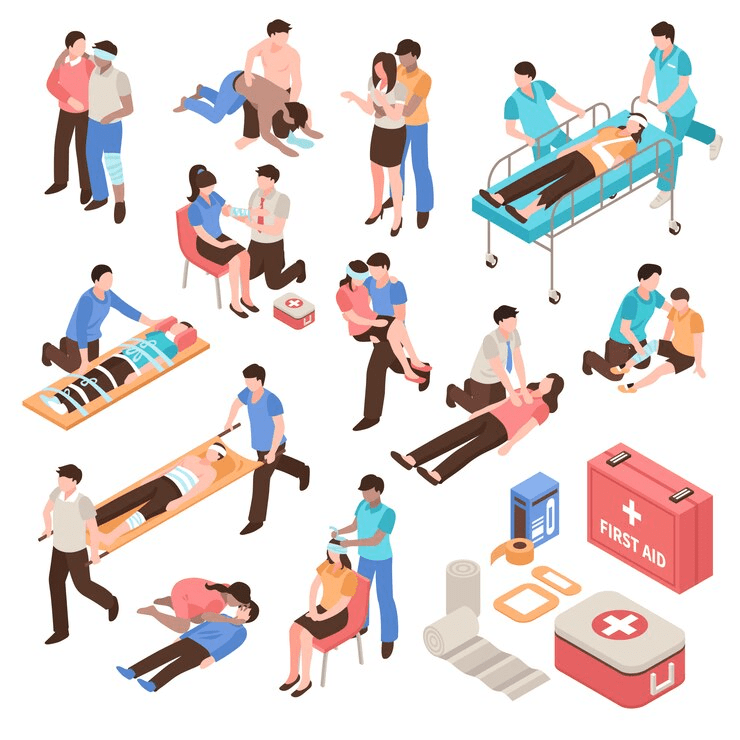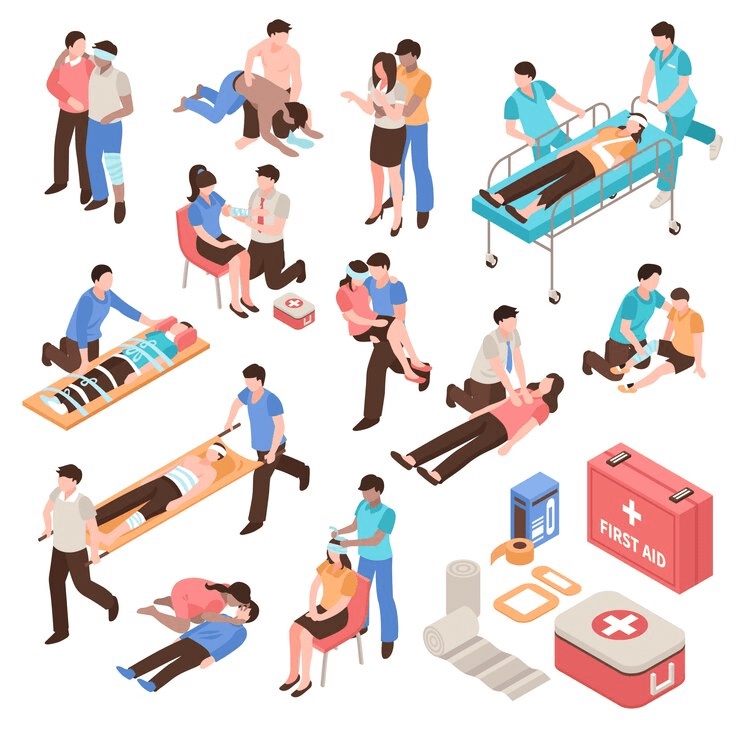
Hey there, fellow life-savers! Today, we're boarding on a journey to master the art of Basic Life Support (BLS) techniques. Whether you're a seasoned rescuer or just dipping your toes into the world of emergency response, understanding BLS can be the difference between life and death in critical situations.
Understanding the Basics: Let's kick things off by breaking down the essence of BLS. It's not just a set of procedures; it's a mindset—a readiness to spring into action when every second counts. BLS revolves around the ABCs: Airway, Breathing, and Circulation. These are the pillars upon which successful resuscitation stands.
Preparation is Key: Picture this: you arrive at the scene of an emergency. Chaos ensues. But amidst the chaos, you remain calm and composed. How? Preparation. Before you even set foot in an emergency situation, take a moment to assess your surroundings. Is it safe to approach? Are there any potential hazards? Equally important, ensure you're equipped with the necessary tools—personal protective equipment (PPE) can be a lifesaver for both rescuer and victim alike.
Check for Responsiveness: It's the first step in your life-saving journey. Approach the victim, but approach with caution. Mildly shake their shoulders while telling, "Are you okay?" No response? It's the time to get things into high gear.
Activate Emergency Response: One of the most crucial steps in any emergency situation is activating the chain of survival. Don't hesitate—dial emergency services immediately. Be clear and concise in your communication. Remember, you're the lifeline between the victim and professional medical help.
Assess Airway: Ah, the gateway to life itself—the airway. It's your job to ensure it remains unobstructed. With gentle precision, tilt the victim's head back and lift their chin. This simple maneuver can make all the difference in ensuring a clear passage for air to flow freely.
Check Breathing: Breathing—so often taken for granted until it's not there. Take a moment to look, listen, and feel for signs of breathing. Place your ear close to the victim's mouth and nose, scanning for the b rise and fall of their chest. Remember, even the faintest breath is a sign of hope.
Perform Chest Compressions: It's time to become a rhythmic powerhouse—a beacon of circulation in a sea of uncertainty. Position yourself beside the victim and place the heel of your hand on the center of their chest. Push hard, push fast, and push to the beat of "Stayin' Alive." Each compression is a lifeline—a testament to your unwavering commitment to sustaining life.
Utilize Rescue Breaths: Two breaths, a brief moment of respite in the symphony of compressions. Ensure a proper seal over the victim's mouth and nose, and with purposeful intent, deliver breaths that ignite the spark of life within them. Watch for the rise and fall of their chest—a silent affirmation of your efforts.
Repeat and Rotate: In the world of BLS, fatigue is the enemy. Don't go it alone—enlist the help of fellow rescuers. Alternate between compressions and breaths, seamlessly transitioning from one to the other. Remember, it's a team effort—a symphony of movement and rhythm working in harmony to save a life.
Stay Calm and Confident: Amidst the chaos, amidst the uncertainty, remain steadfast in your resolve. Confidence is contagious—a beacon of reassurance in the darkest of hours. Trust in your training, trust in your abilities, and above all, trust in the power of hope.
FAQs (Frequently Asked Questions):
Q: How frequently should I renew my BLS certification? A: BLS certifications typically expire every two years. However, it's essential to check with your certifying organization for specific renewal requirements.
Q: Can I perform BLS techniques on children and infants? A: Absolutely! BLS techniques can be modified for pediatric patients. It's crucial to familiarize yourself with the appropriate modifications, especially regarding compression depth and breath delivery.
Q: What if I'm alone when I encounter a victim in need of BLS? A: If you're alone, your priority is to activate emergency services immediately. Begin CPR with hands-only compressions until help arrives.
Q: Is it necessary to perform rescue breaths during BLS, or can I stick to chest compressions only? A: While hands-only CPR can be effective in certain situations, incorporating rescue breaths enhances oxygenation and circulation, thereby improving the victim's chances of survival.
Q: Are there any risks associated with performing BLS techniques? A: While BLS techniques are generally safe, there is a slight risk of injury to the victim, such as rib fractures or damage to internal organs. However, the benefits of timely intervention far outweigh the potential risks.
In conclusion, mastering BLS techniques is not just about following a protocol; it's about embodying the spirit of resilience, readiness, and unwavering dedication to the preservation of life.
Now, if you're eager to take your skills to the next level or seeking a reliable training center to partner with, look no further than CPR Classes Near Me Charlotte. Their comprehensive BLS training programs, led by seasoned instructors, are designed to equip you with the knowledge and confidence to tackle any emergency with grace and precision.
So, what are you waiting for? Dive into the world of BLS, and become a beacon of hope in your community—one heartbeat at a time.
Stay safe, stay prepared, and remember, you have the power to make a difference when it matters most!


No comments yet